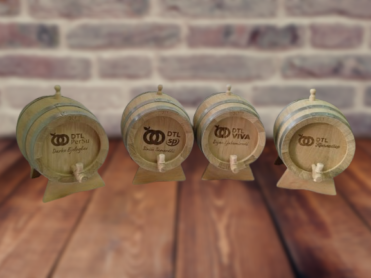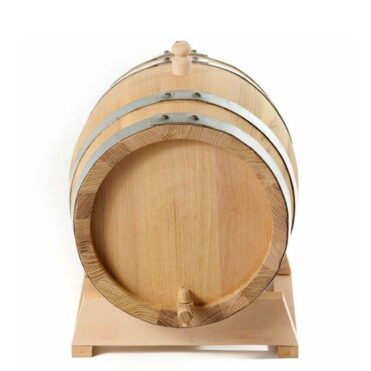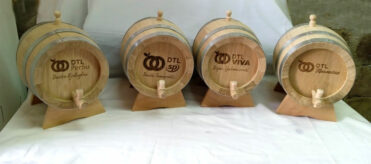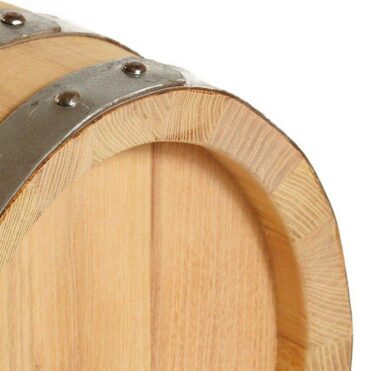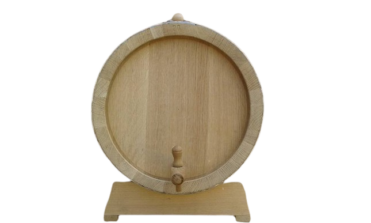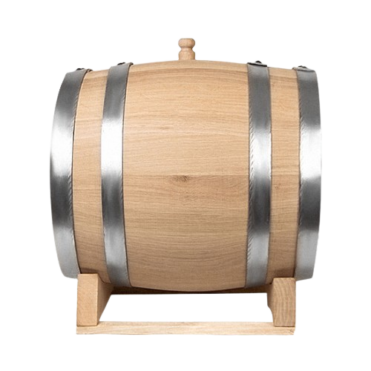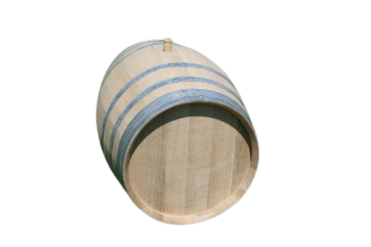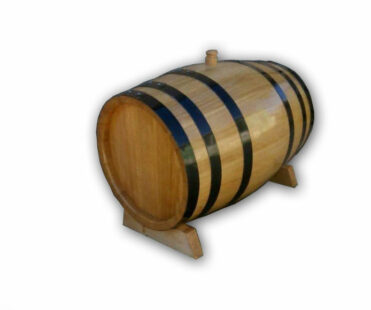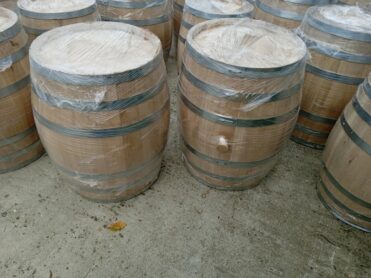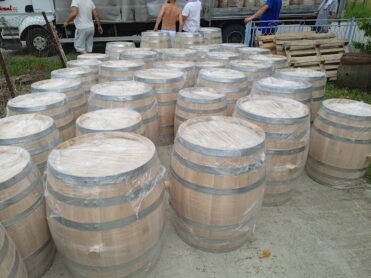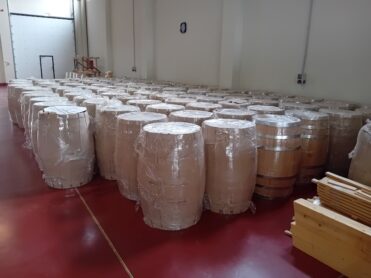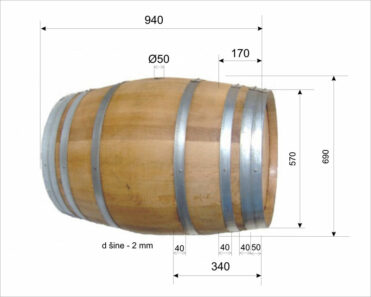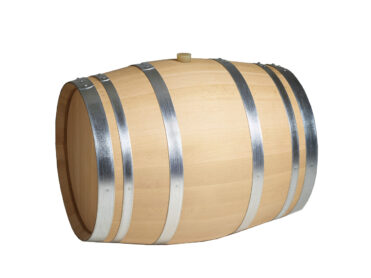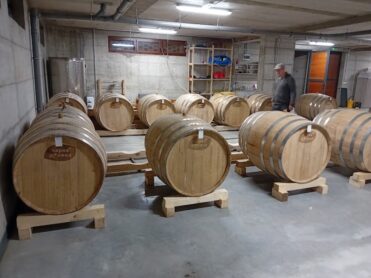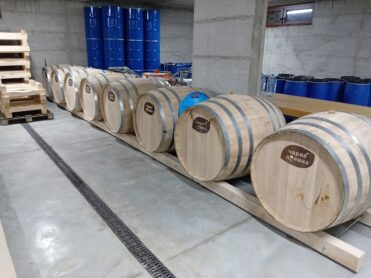If we go back a hundred or two hundred years, it seems that almost all goods that were transported anywhere, from gunpowder to seafood, were packed in shipping barrels. Barrels were convenient for manipulation, stacking, and they were containers for storing goods since ancient times.
However, as the world developed, people began to use cardboard packaging and metal containers at the beginning of the last century and the business of making wooden barrels slowly began to die out…
Wooden barrels are made of long oaks of the first class (without sapwood and knots). Wooden barrels are made from KITNJAK or MEDUNCA oak. The rails used in the production of wooden barrels are black or galvanized, and upon order, the barrel can be made with brass or chrome rails. Small barrels, from 1 to 5 liters, are made from cut debt that has not been bent in the fire. The thickness of the rainbow is approx. 20 mm along its entire length. The galvanized rail is 1.5 mm thick and 20 mm wide. Wood for making barrels is dried for up to 2 years under natural conditions.
The development, investment, and modernization of the wine industry and small family distilleries require larger quantities of wooden barrels, which we now present to you.
Wooden barrels can be made with your company’s logo. The minimum quantity for engraving is 20 pieces. The price of the engraving is determined by the time required for the engraving and is usually around 5 Euros per piece. Decorative barrels from 1 to 5 liters are supplied with a stand and a tap.
Vinegar barrels
In principle, you can make vinegar by simply leaving the wine in a sunny and warm place for a few days. But if you really want to make vinegar, you should forget about this option. Vinegar barrels are manufactured so that all processes of fermentation of wine into vinegar can take place smoothly. When the wine is poured into this barrel, the square opening should be covered with gauze to protect against dust and insects.
Big barrel (BARIK 225 l)
The wine should mature in an oak barrel. Although fermentation in a wooden barrel can add a specific and complex flavor to the wine, today it is common for the wine to mature in large cisterns and then poured into barrels for maturation.
Oak can add a variety of aromas and flavors to wine, such as butter, vanilla, anise, coconut, cloves, caramel, or cinnamon. Serbian oak can add a much stronger aroma than French oak (Quercus pedunculata and Q. sessiflora). In the production of barrique barrels, we use sedum oak and “medunac” oak. A 225-liter barrel has two rails that are 50 mm wide (in the middle of the barrel) and two rails that are 40 mm wide each (at the ends of the barrel).
Wine cellar
Probably the influence of tradition and these tanned characteristics determined that French oak is the traditional standard when it comes to the production of wooden barrels for wines, especially for expensive “reserves”. But, the popularity of Serbian oak is on the rise, because the barrels made from this wood give the wine an extraordinary taste.
The way in which the wood is “burnt” in the production of barrels also changes the taste and flavor of the drink. Well, seasoned Serbian oak “kitnjak” gives a fine taste and improves the quality of wine and spirits.

